Related Research Articles

Capoeira is an Afro-Brazilian martial art and game that includes elements of dance, acrobatics, music and spirituality.

Maculelê is an Afro-Brazilian stick-dance from Bahia.

Manuel dos Reis Machado, commonly called Mestre Bimba, was a Brazilian capoeira mestre and the founder of the capoeira regional style. Bimba was one of the best capoeiristas of his time, undefeated in numerous public challenges against fighters from various martial arts.
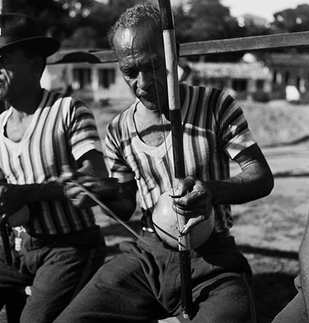
Vicente Ferreira Pastinha, known as Mestre Pastinha, was a mestre of the Afro-Brazilian martial art capoeira and a codifier of the traditional capoeira Angola style.
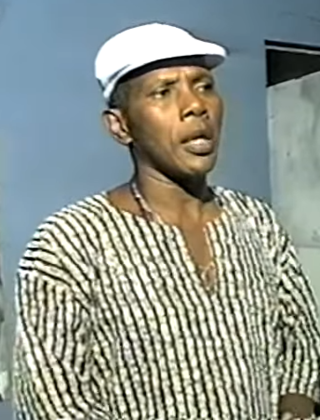
Pedro Moraes Trindade, commonly known as Mestre Moraes, is a master of capoeira.
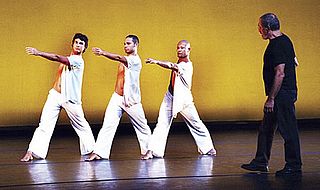
Jelon Vieira is a Brazilian choreographer and teacher who, in 2000, achieved recognition by New York City's Brazilian Cultural Center as a pioneer in presenting to American audiences the Afro-Brazilian art and dance form, Capoeira.

Capoeira de Angola or simply angola is the traditional style of capoeira, the Afro-Brazilian martial art. A newer style, based on the reform of capoeira Angola, is called regional.

João Oliveira dos Santos, better known as Mestre João Grande, is a Grão-Mestre of the Afro-Brazilian martial art of capoeira angola who has contributed to the spread of this art throughout the world. He was a student of the "father of Angola", Mestre Pastinha, and has an academy in New York City.

Mestre Cobra Mansa also known as Cobrinha and Cobrinha Mansa, is a mestre of capoeira Angola.
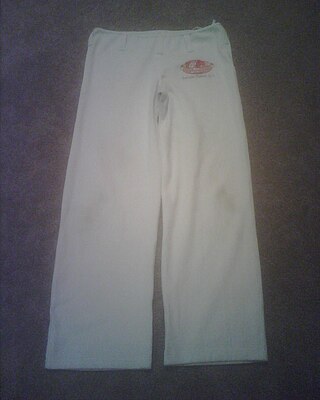
Abadá can refer to various items of clothing: a white tunic worn for prayer by African Muslims, the uniform of port workers in Brazil, the pants worn by capoeiristas, or a shirt sold at a carnival or theatrical production to promote the event.
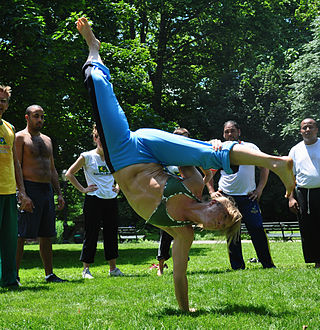
The Brazilian martial art of capoeira, noted for its acrobatic movements and kicks, has often been featured in and influenced popular culture.
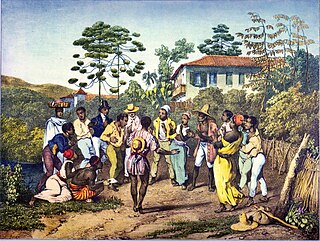
Batuque (drumming) was a general term for various Afro-Brazilian practices in the 19th century, including music, dance, combat game and religion.
Capoeira Regional is a style of capoeira created by Bimba's reform of traditional capoeira in the 1930s. Capoeira regional is presented as a Brazilian product and as a legitimate and effective martial art.
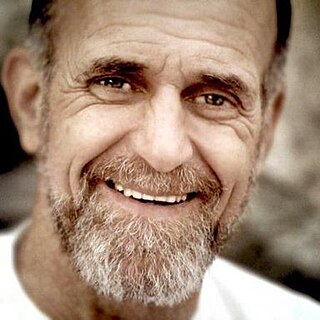
José Tadeu Carneiro Cardoso, also known as Mestre Camisa, is a Capoeira master, most known for creating the organization ABADÁ-Capoeira. ABADÁ-Capoeira was founded in 1988, and ever since, Camisa has been at the head of many important philanthropy and martial arts movements all over the world.

Capoeira: The History of an Afro-Brazilian Martial Art is a book by Matthias Röhrig Assunção published by Routledge in 2005. The book is known for its insight into the far-reaching history of the Brazilian martial art known as Capoeira, and its complex cultural significance to Brazilian identity. It provides a series of in-depth debates on Capoeira, including what it actually is, where its true origins lie, and what it exemplifies. Additionally, it describes the evolution of Capoeira from its roots as it spread to different regions of Brazil in the 19th and 20th Centuries, and the rest of the world in the 21st Century, accepting a multitude of beliefs into a single divers culture. Throughout the book, Capoeira is also seen as a mechanism for racial desegregation.
The history of capoeira explores the origins and development of capoeira, the Brazilian martial art, that combines elements of dance, acrobatics, and music.
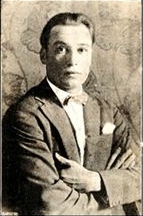
Anníbal Burlamaqui (1898-1965), known as Mestre Zuma, was a Brazilian customs officer, poet, boxer and a prominent advocate for the sport of capoeira during its prohibition. He was one of the main proponents of the fighting-oriented capoeira carioca, without dance, music, and rituals.
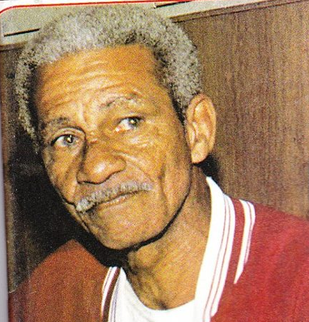
Washington Bruno da Silva (1925–1994), known as Mestre Canjiquinha, was a Brazilian capoeira Angola mestre and a prominent figure in contemporary capoeira.
In the Brazilian martial art capoeira, the title mestre designates the master practitioner. Manuel dos Reis Machado, also known as Mestre Bimba, is credited with transforming capoeira from a street activity to a sport.

Jogo de dentro or jogo de baixo is style of playing capoeira on the ground, involving low movements, with capoeiristas supporting themselves with their feet and hands only. The body should not touch the ground in this modality.
References
- ↑ Assunção, Matthias Röhrig (2005). Capoeira: A History of an Afro-Brazilian Martial Art. Routledge. p. 190. ISBN 9780714650319.
- ↑ Gussow, Mel (April 30, 1975). "Stage: 'Parto,' an Angry Play About Woman's Fate". New York Times.
- ↑ "Capoeira Luanda: Fundadores: Jelon". Capoeira Luana: São Paulo. Retrieved November 1, 2020.
- ↑ Taylor, Gerard (2007). Capoeira: The Jogo de Angola from Luanda to Cyberspace. Berkeley: Blue Snake Books. p. 170. ISBN 978-1556436017.
- ↑ Assunção, Matthias Röhrig (2005). Capoeira: A History of an Afro-Brazilian Martial Art. Routledge. p. 190. ISBN 9780714650319.
- ↑ "Speed of Thought: Capoeira". Internet Archive. December 22, 1979. Retrieved November 1, 2020.
- ↑ "Capoeira at the Disco: Cachaca and Hippopotamus". Breaking and Capoeira. October 14, 2019. Retrieved November 1, 2020.
- ↑ Shange, Ntozake. "On Clark Center". Clark Center NYC. Retrieved November 1, 2020.
- ↑ Hudlin, Warrington (1980). "Capoeira of Brazil". Internet Archive. Retrieved November 1, 2020.
- ↑ "Loremil Machado, 40, Afro-Brazilian Dancer [obituary]". New York Times. March 12, 1994. ProQuest 109289173.